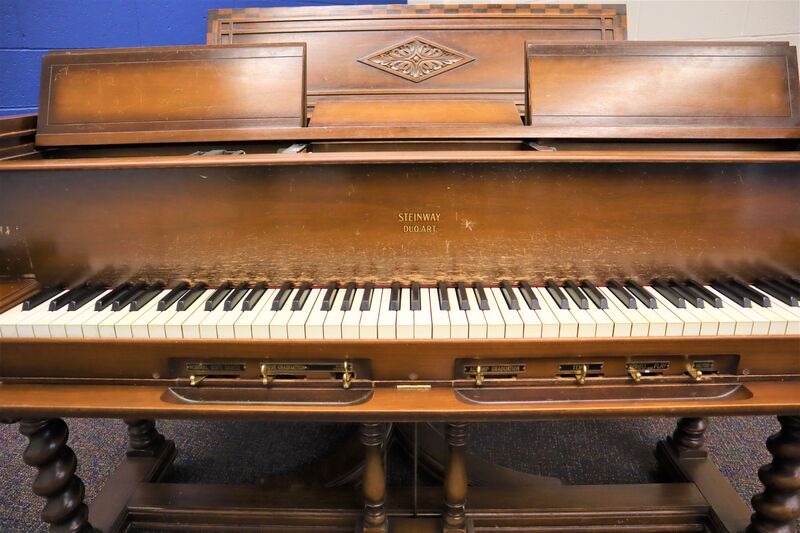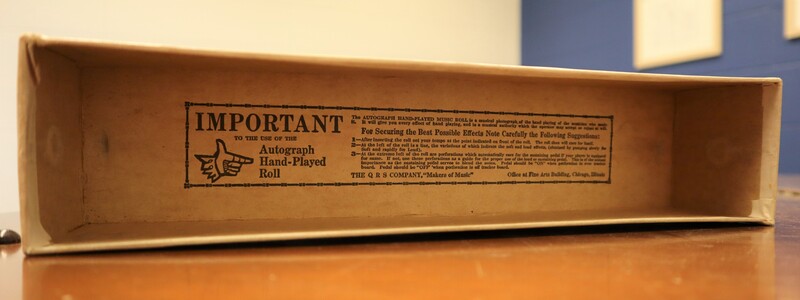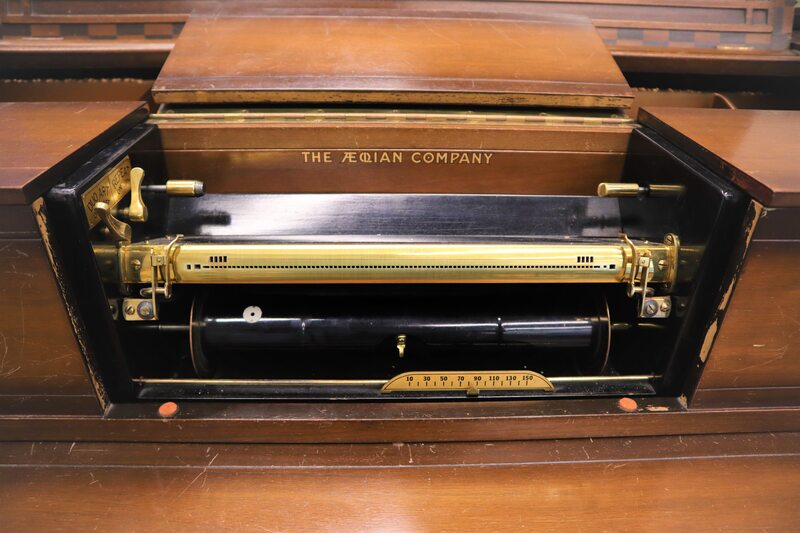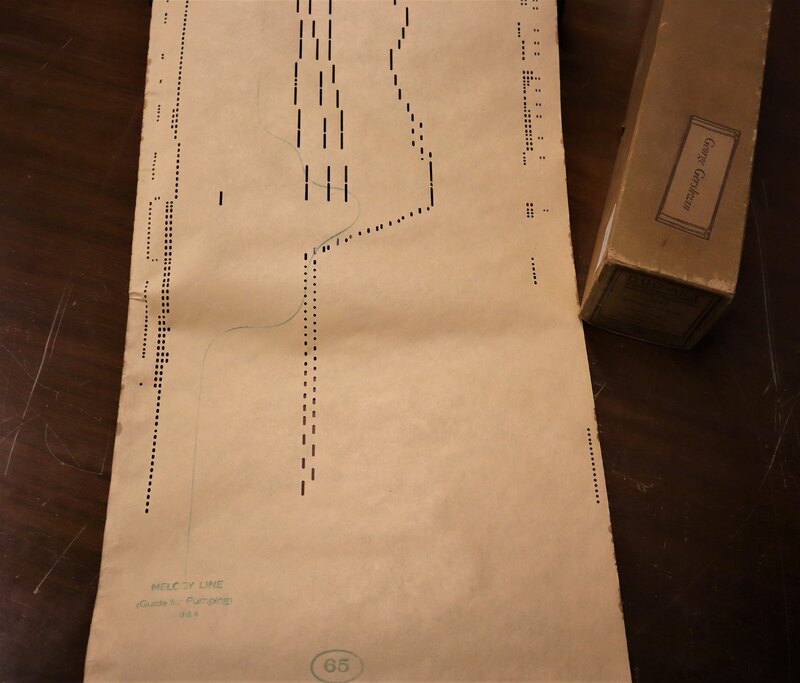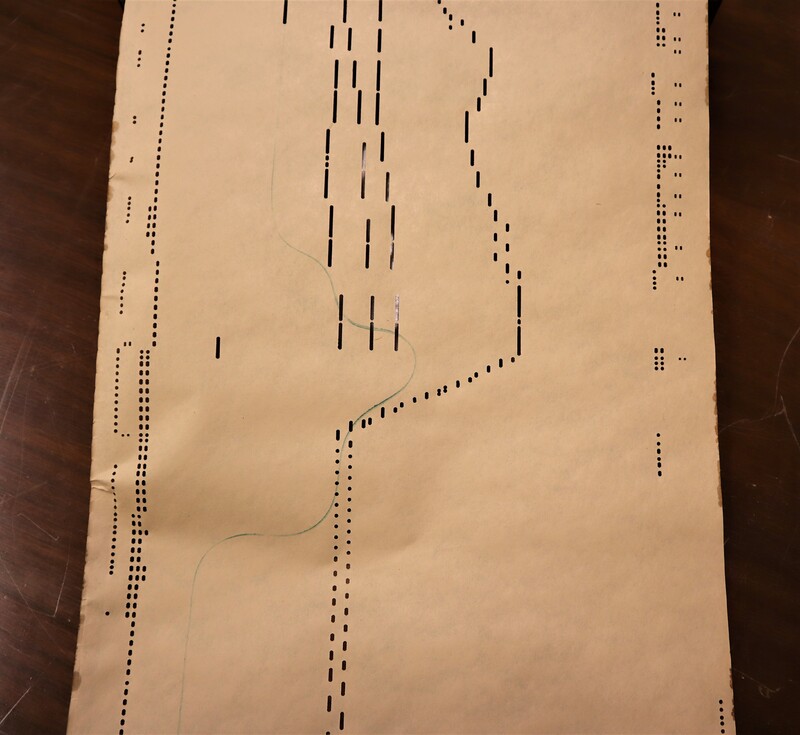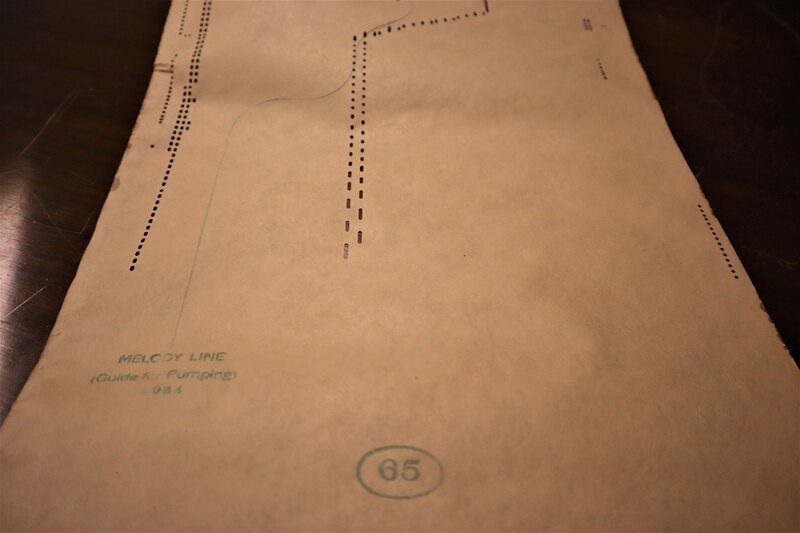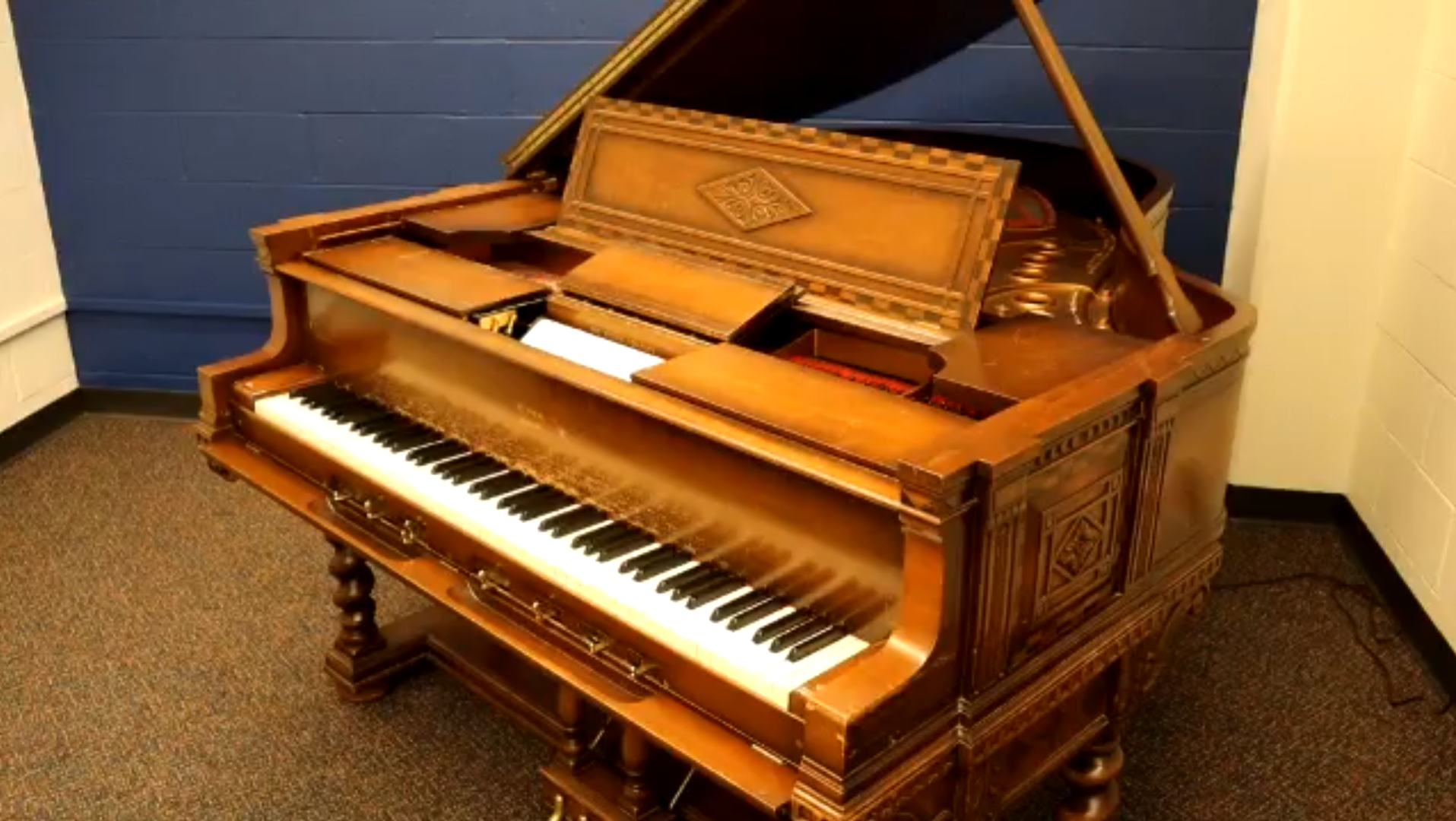Contents
- Player Piano
- Player Piano Rolls
- Types of Rolls: Arranged, Hand-Played, and Reproducing
Types of Rolls: Arranged, Hand-Played, and Reproducing
Arranged Rolls
A piano roll is a recording of a piece of piano music in the form of a long, narrow sheet of paper with various holes, or perforations, along its length. Each perforation represents a note in the piece, and the roll is played on a player piano. Due to advancements in player piano technology in the early 20th century, there are a few different kinds of piano rolls, each with different amounts of information about how to play the piece recorded on the roll.
The first type of roll is the metronomical, or arranged, roll. It is so named because these first piano rolls were mainly used for playing music to dance to. The music was recorded at a steady, metronomic pace, never changing tempo, so that those dancing wouldn't lose their step. These rolls were produced by arranging a piece of music for the piano to play and hand-punching each note as a perforation in the paper itself. Arranged rolls, while recorded with a constant tempo, were sometimes performed by "player pianists" who would manipulate the tempo and dynamics of a roll while it played using foot pedals and levers installed in the piano (see left).
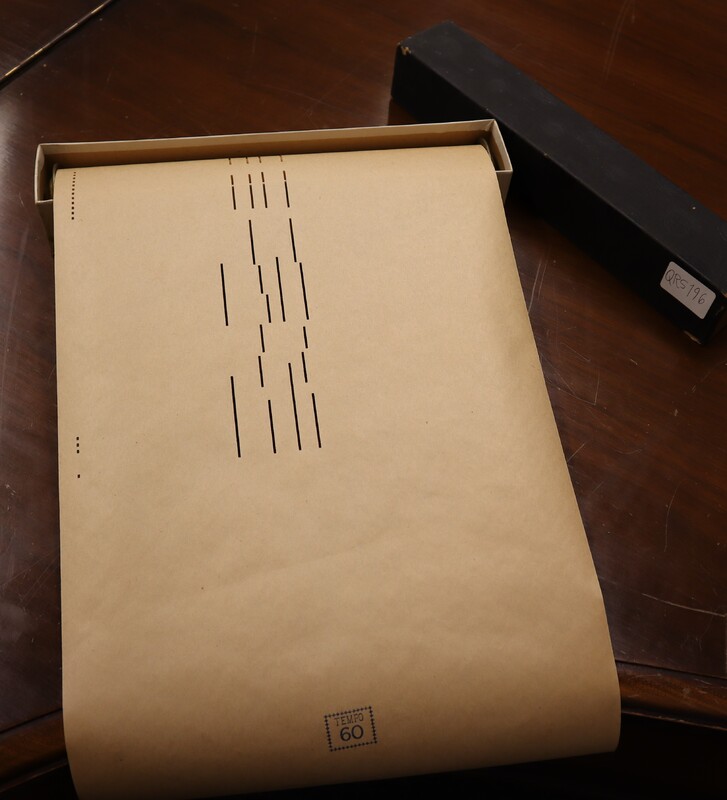
Meditation Op. 90 (Key of Db)
An example of a metronomic, or arranged, roll: C.S. Morrisson's Meditation, Op. 90.
Hand-Played Rolls
Hand-played rolls, while similar to arranged rolls, had much more information recorded on them. They were recorded using a perforating machine that was connected to a piano. A pianist would sit at the piano and "hand-play" a piece of music, and the connected machine would record that pianist's performance onto a piano roll. A roll editor or producer would note dynamic and sometimes tempo changes from the recorded performance, and then print these changes onto the perforated roll. This master roll with markings as well as perforations would then be copied and sold, often marketed with the performing pianist's name attached. Player pianists could purchase the roll and perform it themselves, using either their own interpretation of the music, or the recording pianist's interpretations as marked.
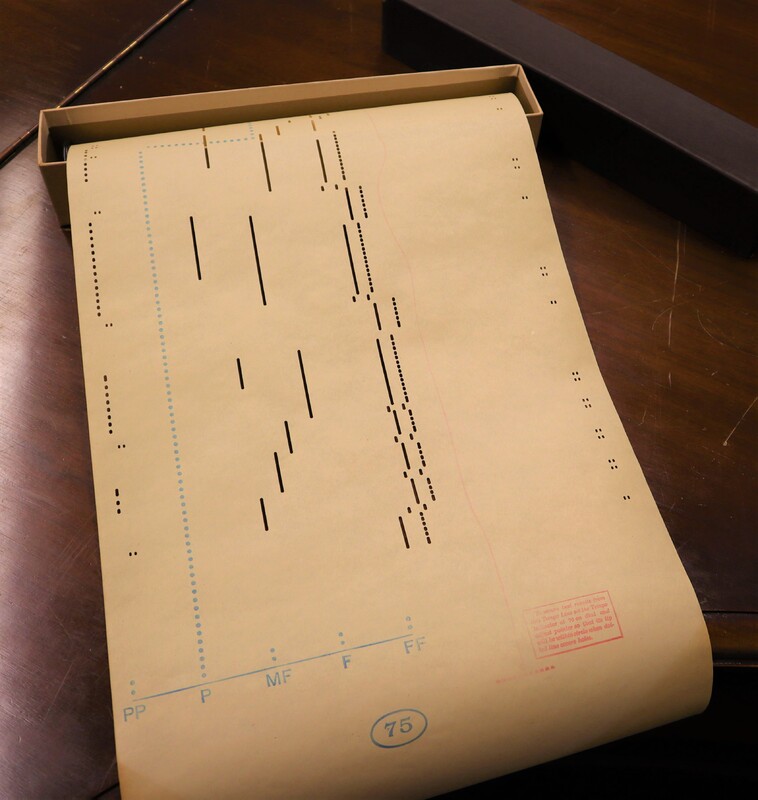
Minuet in G
An example of a hand-played roll: Beethoven's Minuet in G, performed by Felix Arndt, an American pianist and composer. The blue dots on the left-hand side are indications of dynamic changes - PP is very soft and FF is very loud. The faint red line on the right-hand side indicates the fluctuations in tempo - how fast or slow the piece is to be performed.
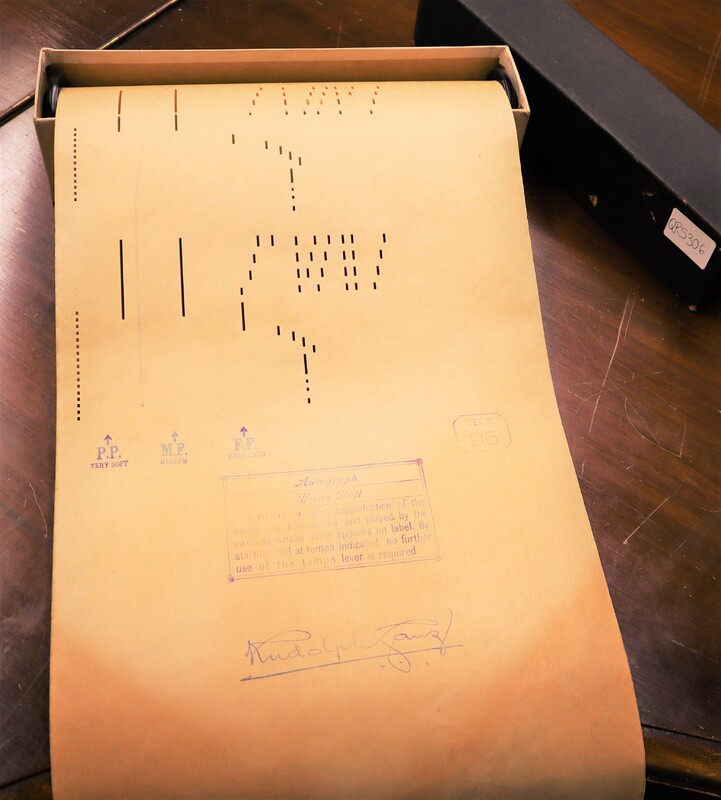
Valse Brillante Op. 34, No. 1 (Key of Ab)
Another example of a hand-played roll: Chopin's Valse Brilliante, Op. 34, No. 1 performed by Rudolph Ganz, a Swiss-born American pianist and composer. This roll was recorded with Ganz's tempo fluctuations coded into it, so the only markings are the dynamic interpretations on the left-hand side of the roll. The purple box above Ganz's signature on the page explains that, "By starting [the] roll at [the] tempo indicated, no further use of the tempo lever is required."
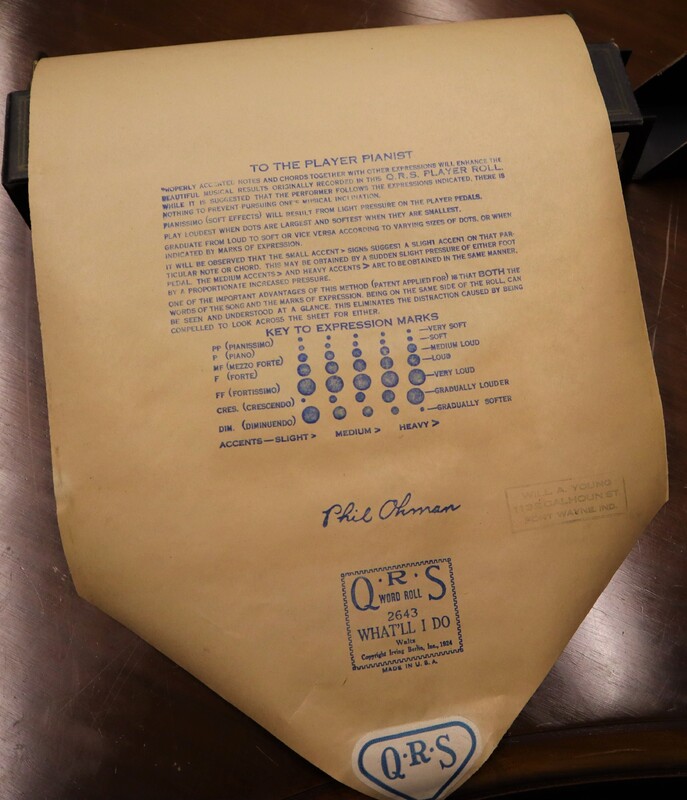
What'll I Do?
A hand-played roll of Irving Berlin's "What'll I Do?", performed by American film composer and pianist Phil Ohman. Pictured here are instructions to the player pianist for interpreting the dynamic and accent markings on a particular roll.
Reproducing Rolls
Around 1914, The Aeolian Company introduced their Duo-Art player piano mechanism. The Duo-Art allowed standard rolls to be played and manipulated like other pianos, but it also had the capability of a "reproducing" performance. Duo-Art reproducing rolls have extra perforations on the left- and right-hand sides of the roll, which function as a code for the player mechanism to read dynamic and articulation changes.
MPAL's Duo-Art player piano has a switch - labelled "Duo-Art" - to the left of the tracker bar (pictured above) to turn the reproducing mechanism on or off, allowing it to play both standard hand-played and reproducing rolls. These types of reproducing rolls were often marketed as reproducing the 'soul' of the original recording artist!
Pictured below is a reproducing roll of George Gershwin performing his own Rhapsody in Blue (Part 1). Notice the extra perforations on the left- and right-hand edges of the paper. There is also a printed "melody line" for use on standard pianos with a manual pumping mechanism.
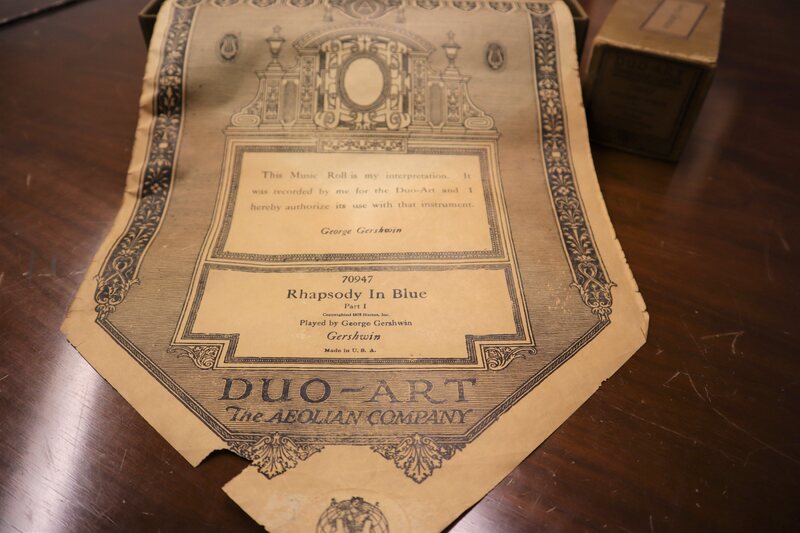
Rhapsody In Blue (Part I)
Detailed and decorated leader of Gershwin's performance of Rhapsody in Blue (Part 1), including his statement: "This Music Roll is my interpretation. It was recorded by me for the Duo-Art and I hereby authorize its use with that instrument."
Other Reproducing Rolls
-
 Rhapsody In Blue (Part I) Recording of "Rhapsody In Blue (Part I)", composed and performed by George Gershwin. Perforated roll intended for use on player pianos.
Rhapsody In Blue (Part I) Recording of "Rhapsody In Blue (Part I)", composed and performed by George Gershwin. Perforated roll intended for use on player pianos. -
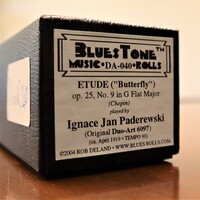 Etude ("Butterfly") op. 25, No. 9 in G Flat Major Recording of "Etude ("Butterfly") op. 25, No. 9 in G Flat Major", composed by Frederic Chopin and performed by Ignace Jan Paderewski. Perforated roll intended for use on player pianos.
Etude ("Butterfly") op. 25, No. 9 in G Flat Major Recording of "Etude ("Butterfly") op. 25, No. 9 in G Flat Major", composed by Frederic Chopin and performed by Ignace Jan Paderewski. Perforated roll intended for use on player pianos. -
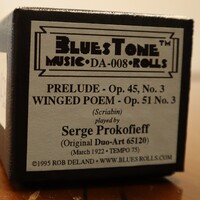 Prelude - Op. 45, No. 3, Winged Poem - Op. 51 No. 3 Recording of "Prelude - Op. 45, No. 3" and "Winged Poem - Op. 51 No. 3", composed by Aleksandr Nikolayevich Scriabin and performed by Sergey Prokofiev. Perforated roll intended for use on player pianos.
Prelude - Op. 45, No. 3, Winged Poem - Op. 51 No. 3 Recording of "Prelude - Op. 45, No. 3" and "Winged Poem - Op. 51 No. 3", composed by Aleksandr Nikolayevich Scriabin and performed by Sergey Prokofiev. Perforated roll intended for use on player pianos. -
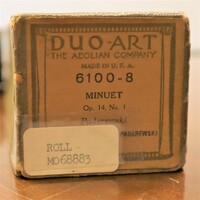 Minuet Op. 14, No. 1 Recording of "Minuet Op. 14, No. 1", composed and performed by Ignace Jan Paderewski. Perforated roll intended for use on player pianos.
Minuet Op. 14, No. 1 Recording of "Minuet Op. 14, No. 1", composed and performed by Ignace Jan Paderewski. Perforated roll intended for use on player pianos.
